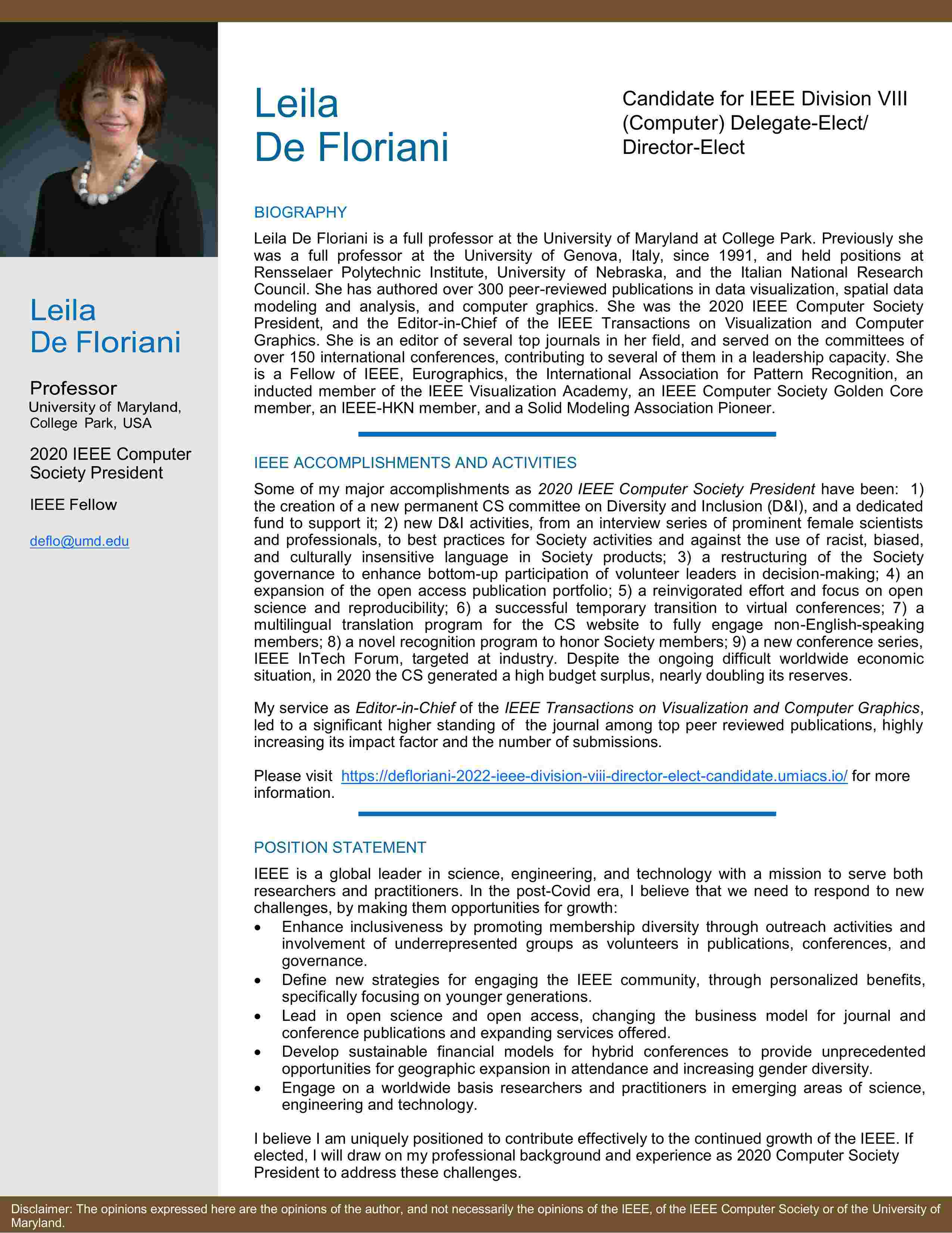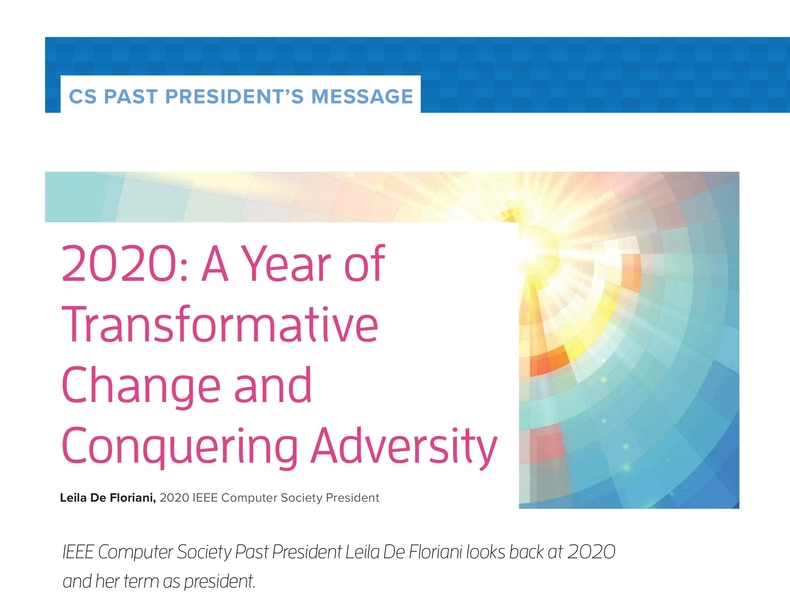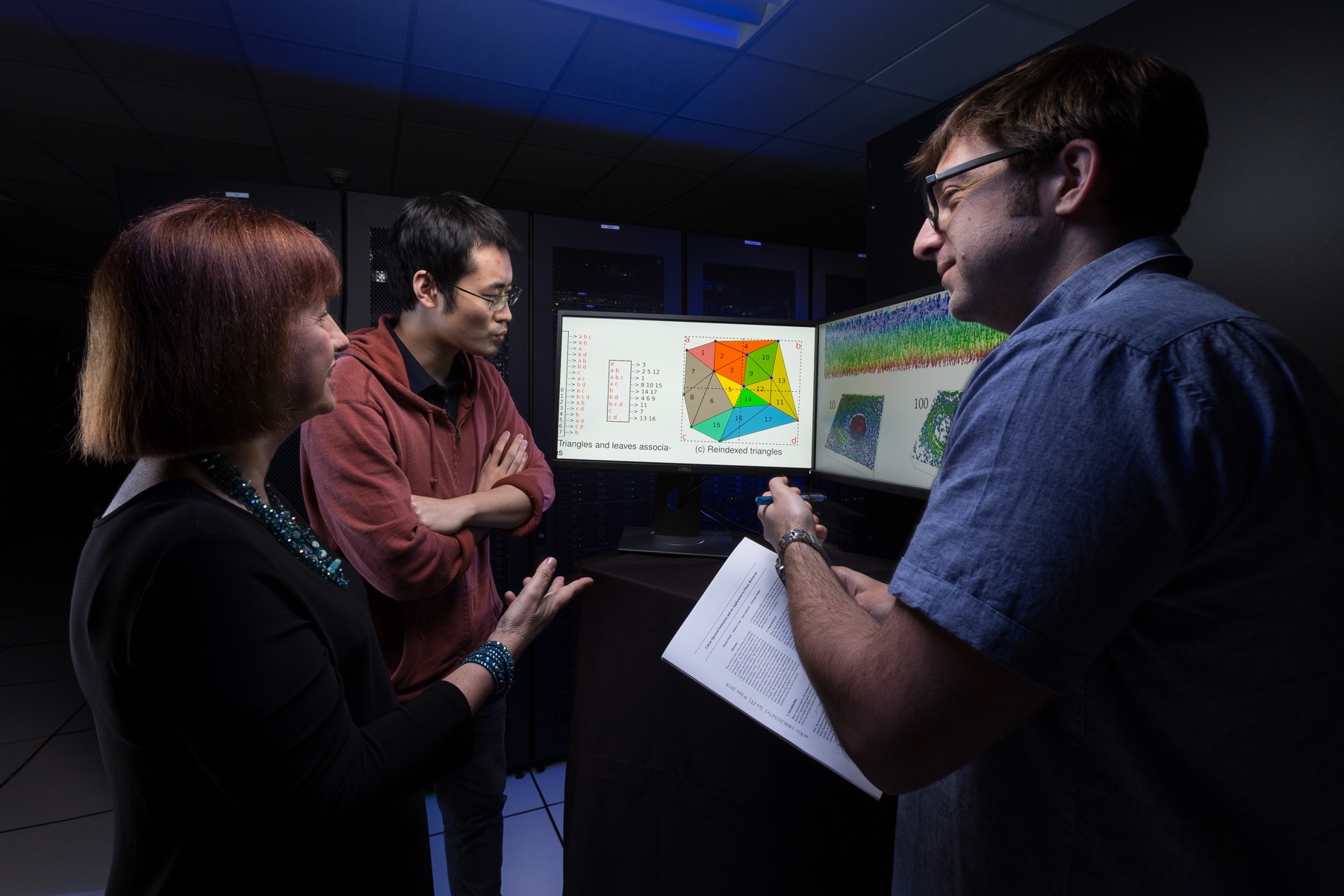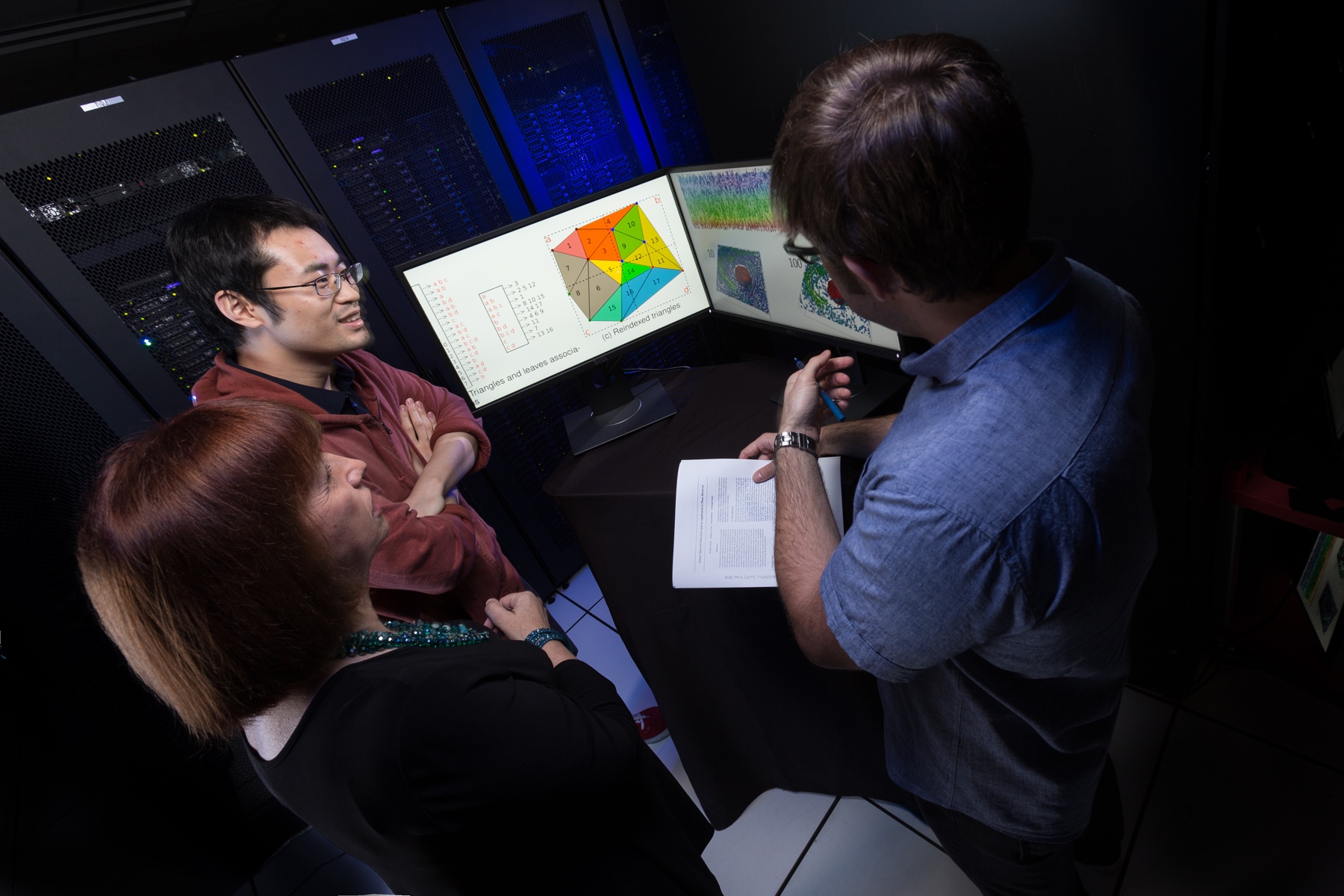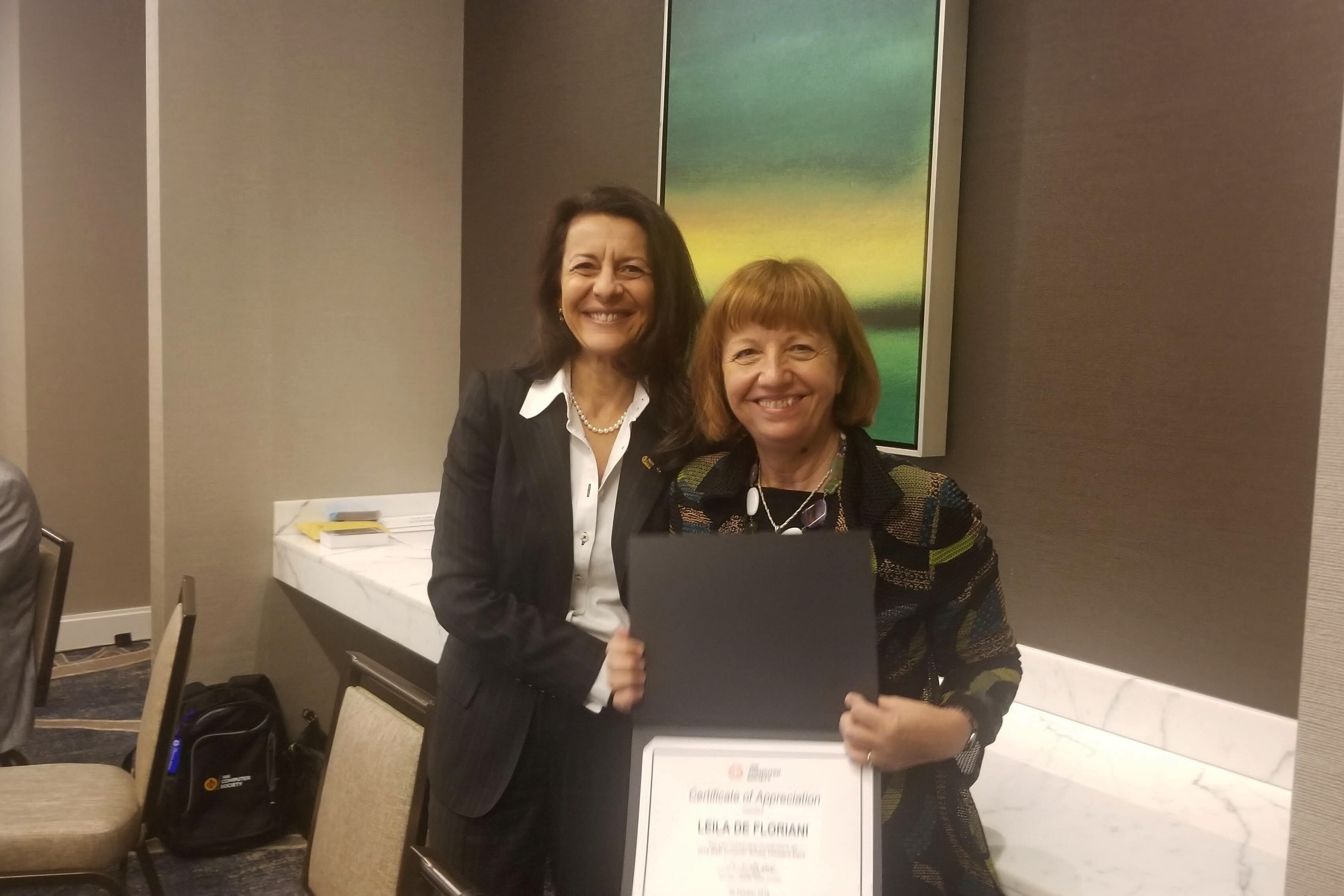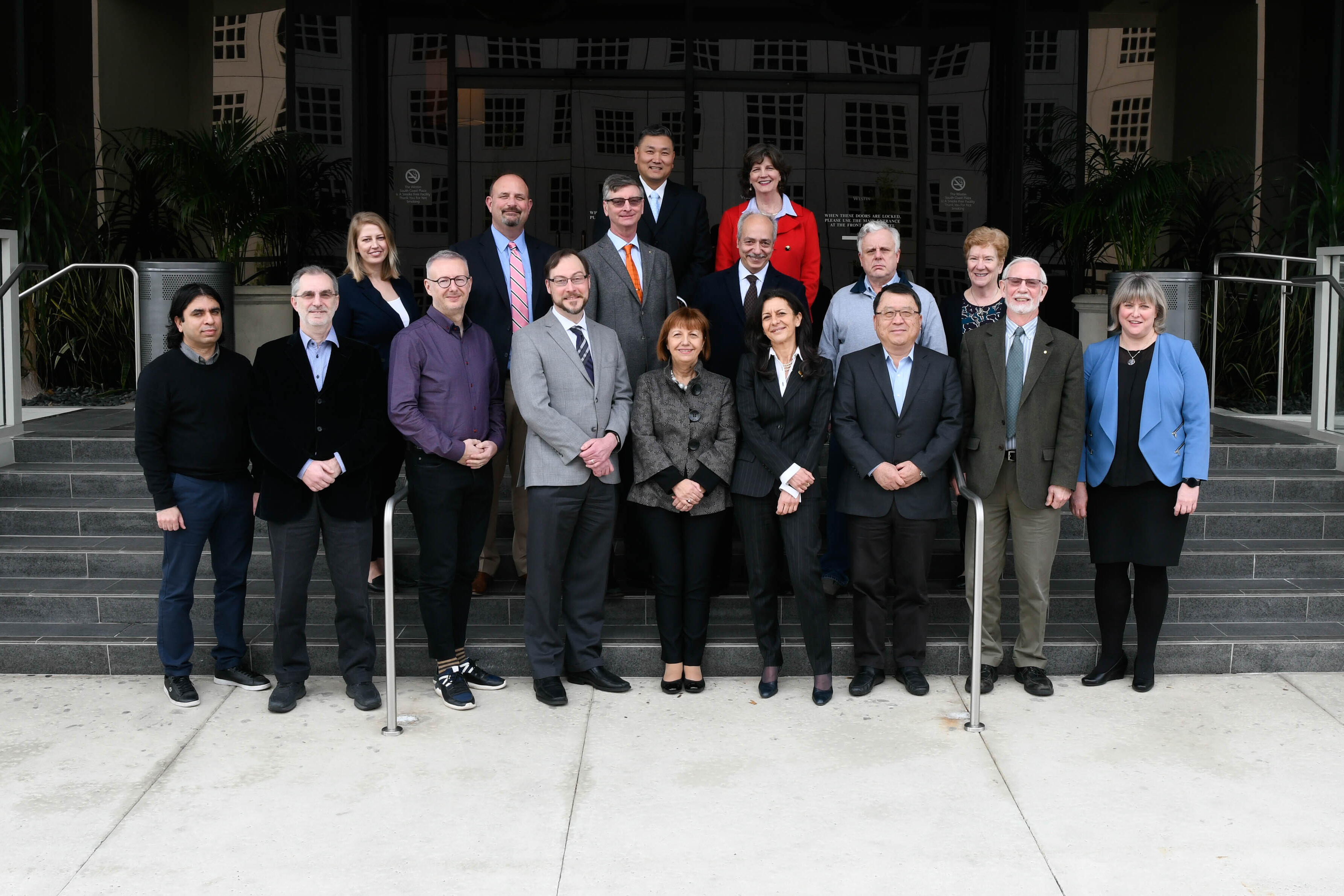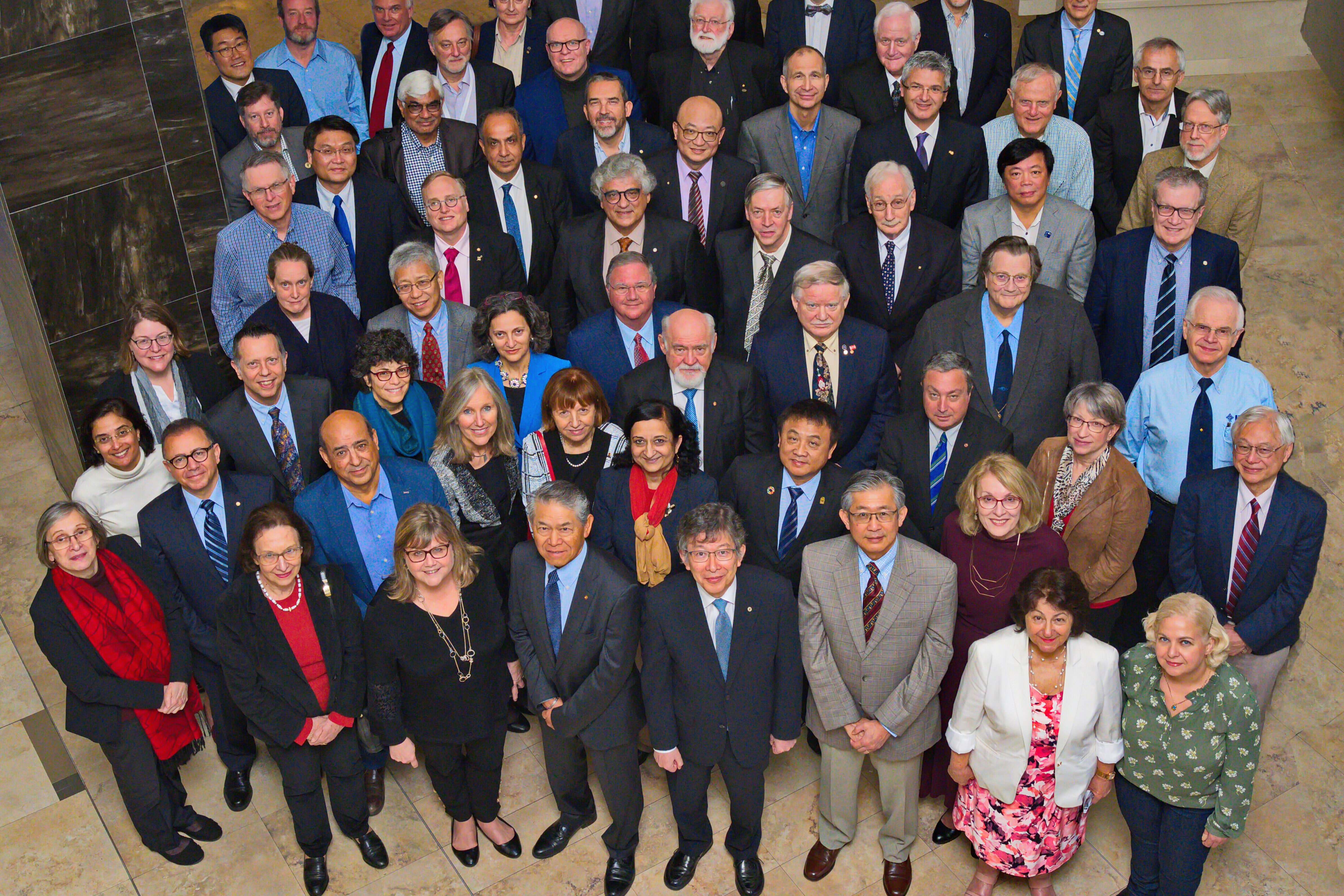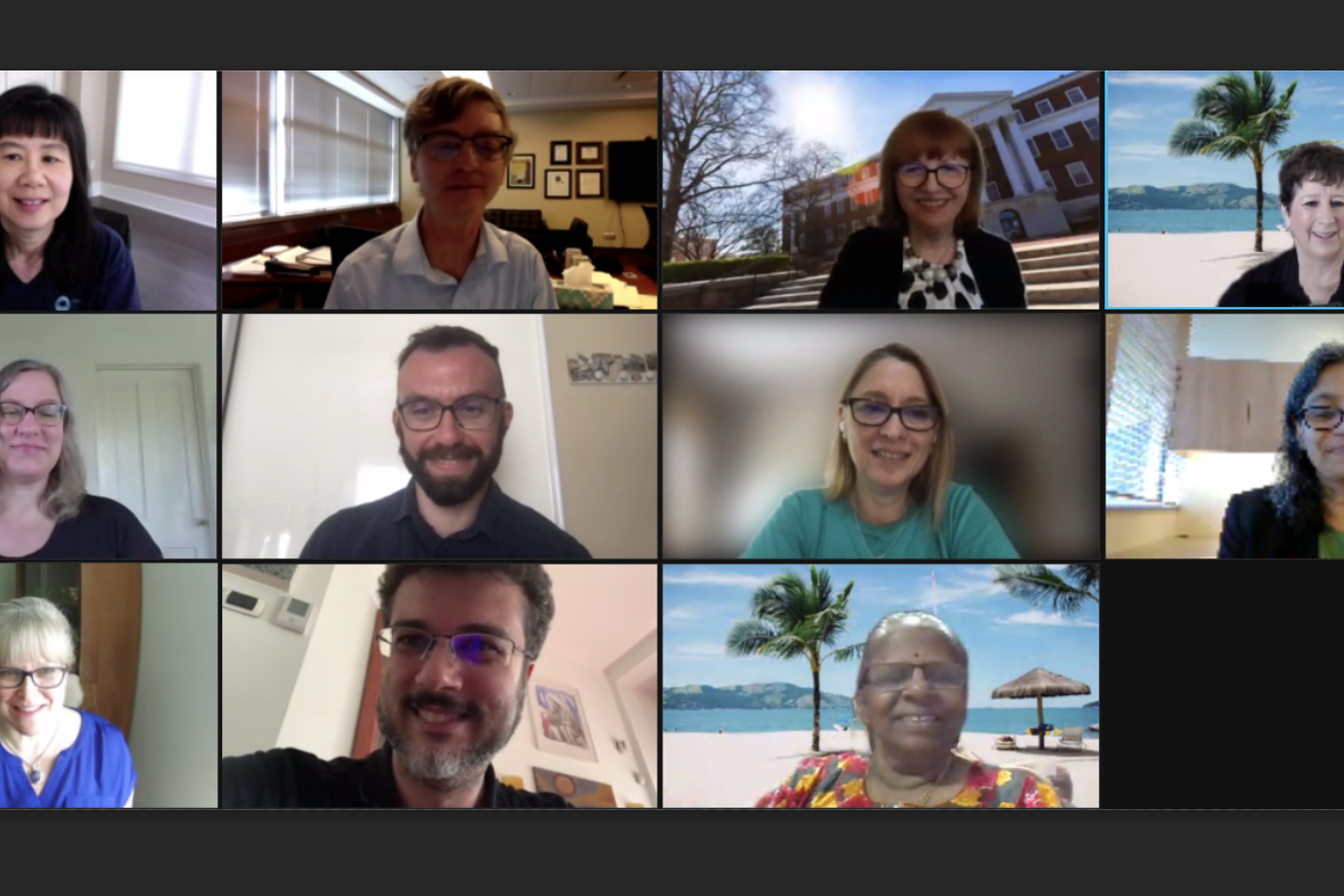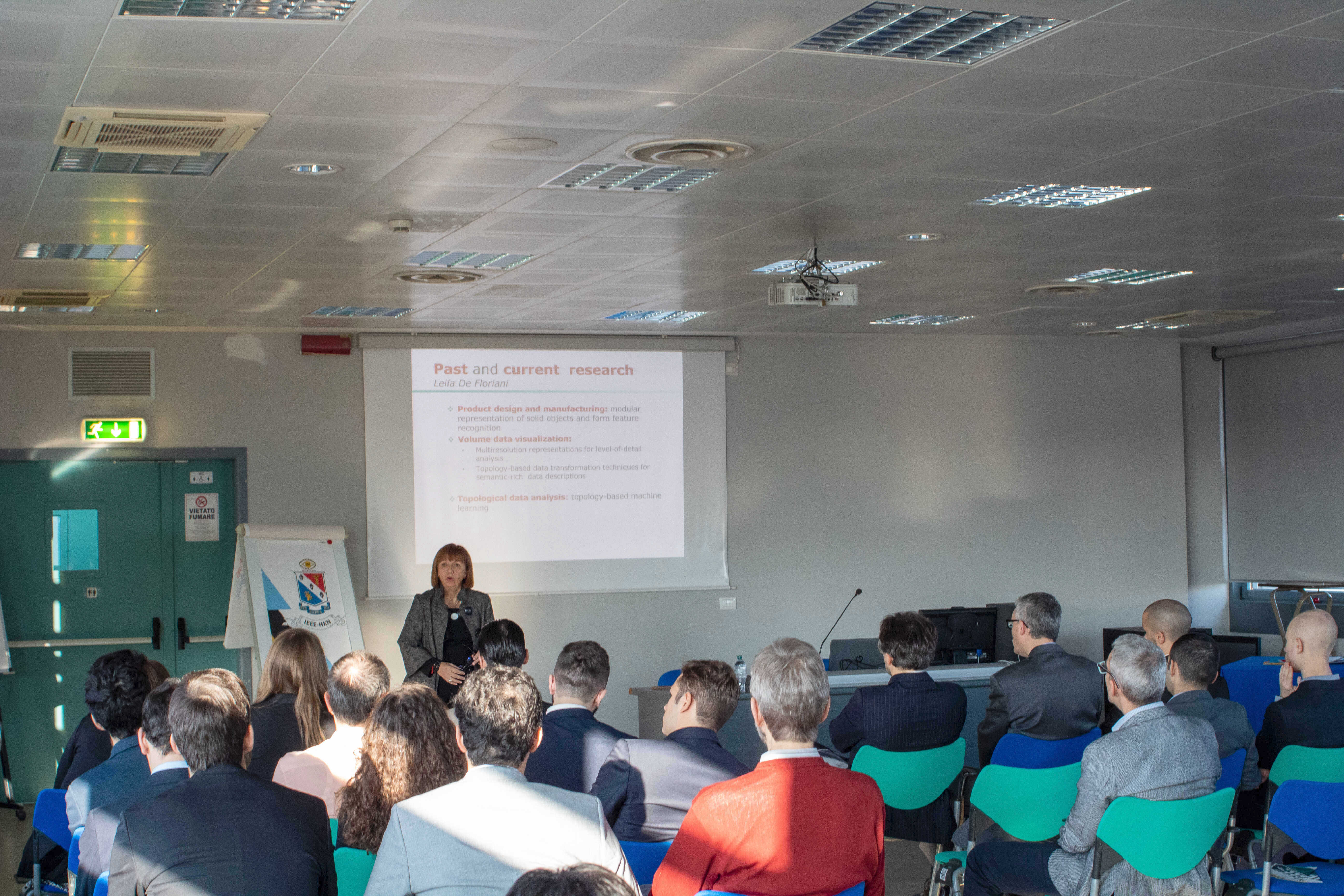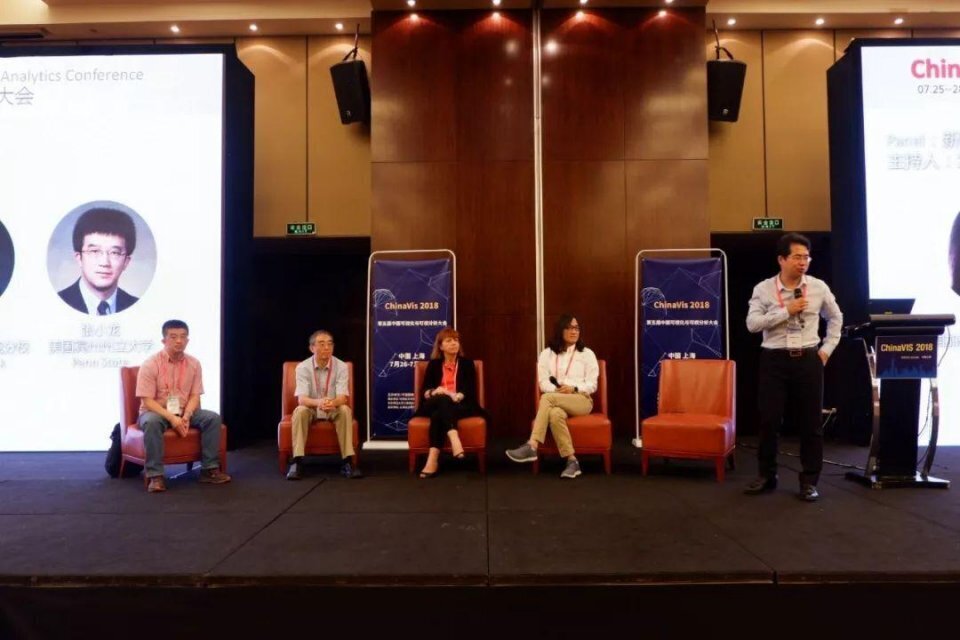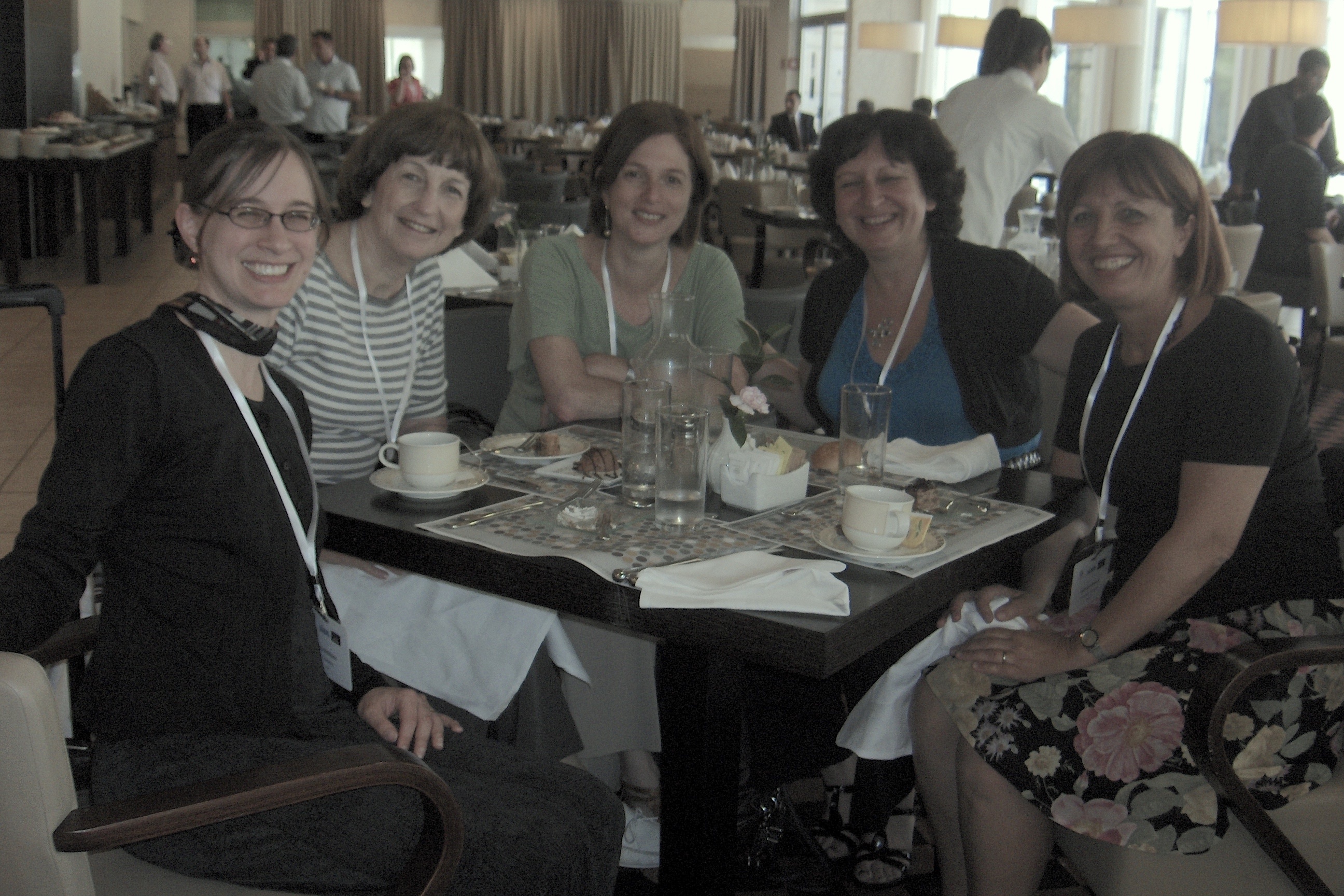Leila De Floriani
Candidate for 2022 IEEE Division VIII (Computer) Delegate-Elect/ Director-Elect.
2020 IEEE Computer Society President, Professor
University of Maryland
A vote can be cast by accessing the ballot here.
Voting deadline: October 1, 2021 at 12:00 (noon) ET.
Short Biography
Leila De Floriani is a full professor at the University of Maryland at College Park. Previously, she was a full professor at the University of Genova, Italy, since 1991, and held positions at Rensselaer Polytechnic Institute, University of Nebraska, and the Italian National Research Council. She was the 2020 IEEE Computer Society (CS) President. She currently serves as the IEEE CS Past President and as chair of the IEEE CS Diversity and Inclusion Committee. She is also a member of the IEEE Conferences and of the IEEE Conference Publications Committees.
She served for two terms (2015-2018) as the Editor-in-Chief of the IEEE Transactions on Visualization and Computer Graphics. She is currently an associate editor of several top journals in the field. She serves and has served on the committees of over 150 international conferences, including many IEEE conferences, contributing to several of them in a leadership capacity.
De Floriani is a Fellow of IEEE, a Fellow of the International Association for Pattern Recognition (IAPR), a Fellow of the Eurographics Association, Solid Modeling Association Pioneer and an inducted member of the IEEE Visualization Academy. She is an IEEE Computer Society Golden Core Member and a member of the IEEE Honor Society IEEE-HKN.
She has authored over 300 peer-reviewed scientific publications in data visualization, spatial data representation and processing, computer graphics, geometric modeling, shape analysis and understanding, garnering several best paper awards and invitations as a keynote speaker. Her research has been funded by numerous U.S., Italian and international agencies, including the European Commission, the U.S. National Science Foundation and the Italian National Research Council.
Please visit my academic webpage for more information on research, teaching and professional activities.
